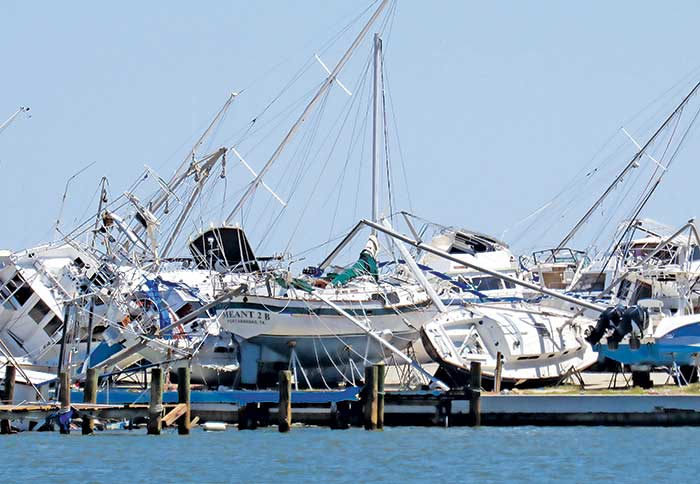Advertisement
Even though it's barely summer, hurricane season is right around the corner. The good news? We've got your back with more comprehensive hurricane prep info than anyone else in the business.

BoatUS has been insuring boats for more than 50 years, and we've learned a thing or two about the best way to prep a boat to survive a hurricane. Since 1983, our BoatUS Catastrophe (CAT) team has been in the field right after major storms, arranging recovery and repair for sometimes thousands of boats, giving us up-close and firsthand looks at how boats fared through various storms. Our CAT team is comprised of BoatUS claims professionals and salvage experts as well as experienced marine surveyors, such as Mike McCook.
Last year, Hurricane Florence lumbered ashore near Wrightsville Beach, North Carolina, and the CAT team arrived as soon as the water was receding. After most major storms, the damage is widespread with hundreds of boats stacked on each other, sinking, or even in backyards. Last fall, McCook noted that while the team found some severe damage at a few marinas, "we also saw that in seeking protection from the storm, many boaters had removed their boats from the water."
McCook said he believed that the combination of many vessels being of a trailerable size and that people in that part of the country are attuned to hurricanes and have embraced recreational boat hurricane preparation were critical factors that reduced the potential for boat damage from Hurricane Florence. McCook noted that many marinas were full of boats stored ashore, and "the majority of boat owners simply took their boats home and parked them in the driveway, on streets, in the middle of open fields, and away from falling trees. They listened to the warnings." Catastrophic total losses, or those vessels that were totally destroyed, appeared to be minimal.
While that's very good news, McCook notes that it's far from the norm. In 2017, for example, hurricanes Harvey and Irma damaged or destroyed more than 63,000 boats with a value of $655 million, strikingly close to Hurricane Sandy in 2012, which remains the single-largest industry loss with more than 65,000 boats damaged and more than $650 million in estimated losses.
While it's too early to predict what the 2019 season holds (and hurricane predictions tend to be notoriously inaccurate), one thing we can say is that those who prepare their boats properly for a major storm are far more likely to be back on the water after the storm. One more thing: Now is the time to go to BoatUS.com/Insurance to make sure you have the right coverage and that your boat's location is correct. Don't wait until you're surprised by a storm coming only to find out you can't make any changes.
